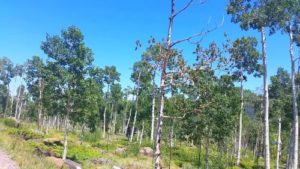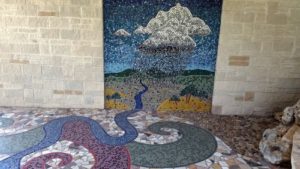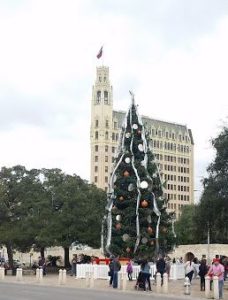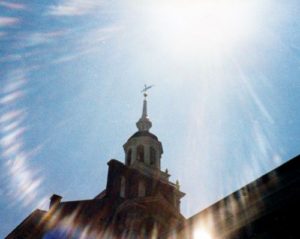I mentioned back before the trip that I hoped to find the birth record of an ancestor while I was in Salt Lake City. I figured it wouldn’t take that long, but it ended up taking about three hours. Alex is very patient. I may have found the record (we do know that the birth date and the first three letters of the surname match what I know about the ancestor), but it’s in Russian and I don’t speak Russian.
Afterwards, we spent a few hours in Temple Square, which seems much larger than I think it actually is. Officially, Temple Square is ten acres, which is three times the size of Main Plaza here in San Antonio. However, just outside what I think is the official Temple Square is a reflecting pool and then there is another probably ten-acre parcel with other buildings on it. At any rate, the other parcel looks to be the same size as Temple Square.
Since we came in from the Family History Library, we, of course, approached through the Temple Street entrance, in between the Assembly Hall and the Tabernacle. There are so many trees in Temple Square now that the impact of the Tabernacle is somehow lost. I was very taken by the Assembly Hall, though, and took lots of pictures.
We walked around the fence around the Temple (not being Mormon, we didn’t have, erm, a prayer of getting beyond that fence) and discovered a reflecting pool and, beyond that, office buildings for the church, the Joseph Smith Memorial building (which used to be the Hotel Utah) and a fountain (see image). Even farther on, you find the two homes of Brigham Young, the Lion House and the earlier Beehive House, both named for sculptures that are part of their architecture. The Lion and Beehive Houses were designed by the same architect who designed the temple itself.
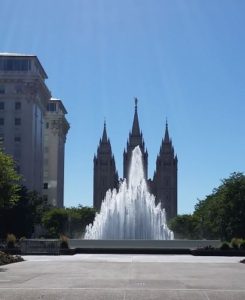
The temple points “towards Jerusalem,” which means east. I once looked up the shortest possible distance from my home to Mecca and found that I would have to face northeast (more or less), so I suspected that was true of the temple and Jerusalem, as well. And it is. The temple should, technically, face northeast. But that’s not the actually odd part. No, the odd part, to me, at least, is that the temple is on the eastern edge of the square, so that when you approach the temple from the square itself, you are walking up to the back of the building. I wonder how many non-Mormon businesspeople and tourists staying at the Hotel Utah looked out of their hotel room window and had similar thoughts.

